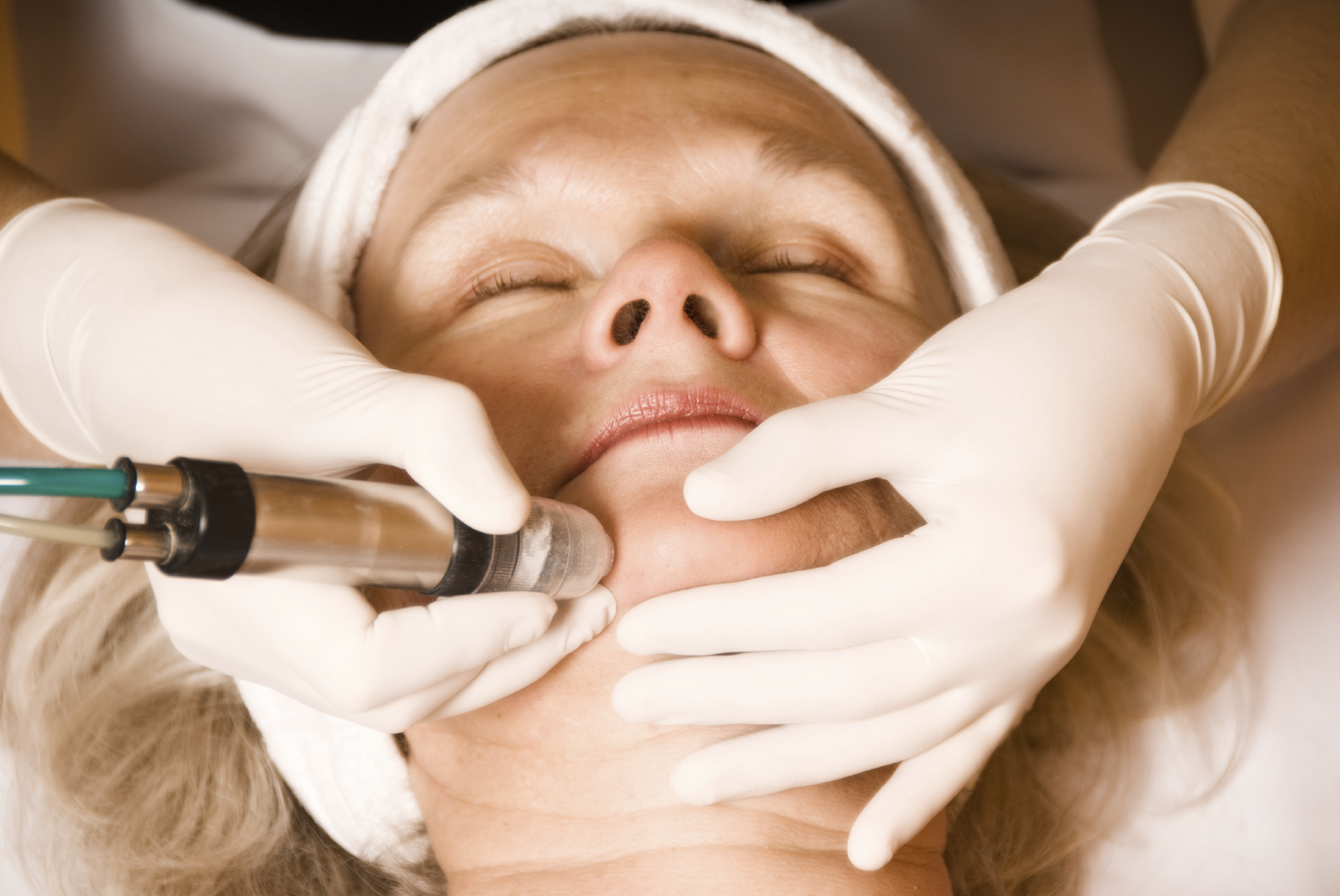Microdermabrasion Facial Treatment – Normal, Dry, Combination and Oily Skin types
Remember depending on the type of skin you can customize how deep you do a microdermabrasion treatment. If you are performing a microdermabrasion for oily or acne skin remember if the acne is active you may want to just do a Clarifying and Purifying Treatment, Refreshing Rose Treatment or a Retexturizing Enzyme Treatment. Always remember the vacuum portion of the treatment does not have to be set too high. Too much suction can create broken capillaries and irritate the skin. Try using treatment products along with your microdermabrasion facial treatment to give you the best results without complications.
Treatment Time: 45-60 minutes
Skin Types : All Skin Types
Suggested Price: $95-125
- Cleanse with Facial Gel Cleanser
- Tone skin with Skin Balancing Toner (if you are doing a microdermabrasion for acne treatment you can use the Gentle Clarifying Toner (AHA toner) instead to prepare the skin)
- Cleanse and exfoliate with AHA Micro Bead Polish (if you are doing a microdermabrasion for acne treatment you can omit this step.)
- Apply a thin layer of Revitalizing Enzyme Mask. Use with Steamer or hot towel compress
- Leave on for 3-8 minutes depending on skin type and rinse. If skin is very sensitive, leave on less time. Begin to Microderm the skin. If skin is sensitive may need to do less passes.
- Apply Hydration Support Moisturizing Mask if skin is sensitive or irritated.
- Apply a hydrating or nourishing serum depending on the skin type. Vitamin Restore Serum is great for dry or skin concerned about aging and Balance Serum is great if you are doing a microdermabrasion for acne or skin with oil (Clarifying Serum can tingle).
- Apply Antioxidant Anti-Aging Eye Cream
- Apply Light Moisture Cream for combination skin or Vitamin Daily Moisturizer for dry skin.
*Recommended protocols are designed to give you an idea of where to use products in your treatment room. Not all protocols can be used on all skin types. Protocols may be different depending on skin type or sensitivity.

